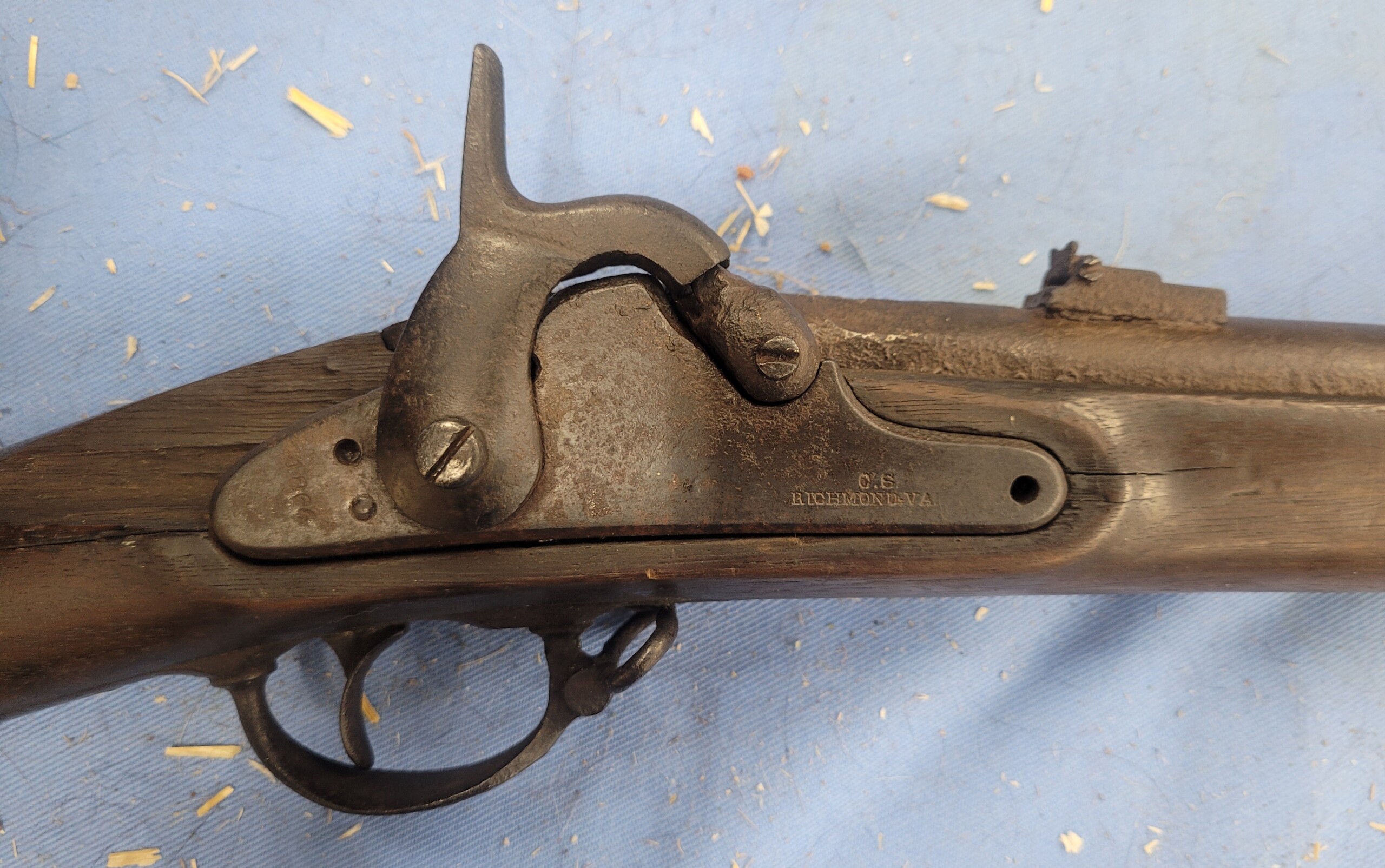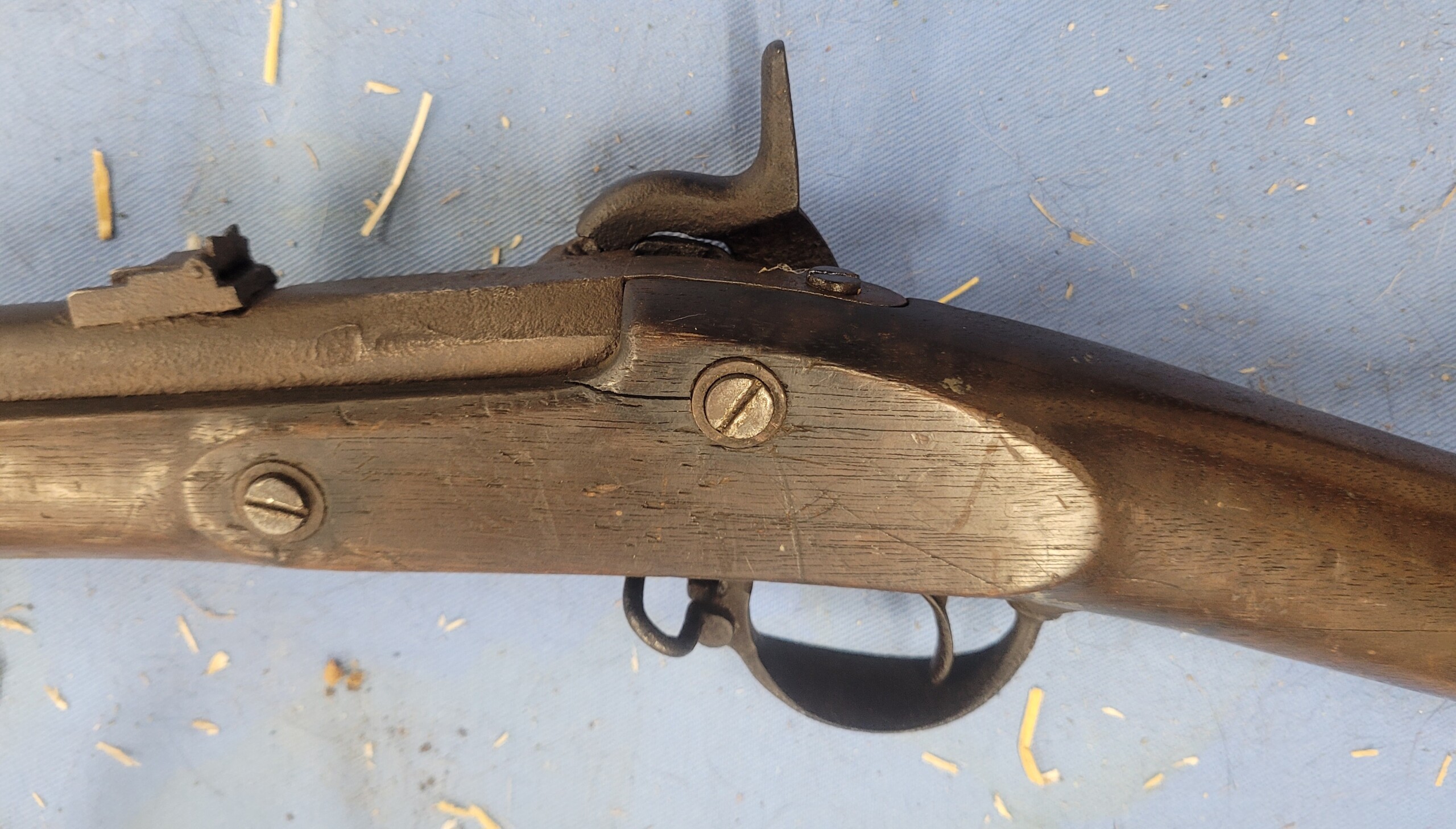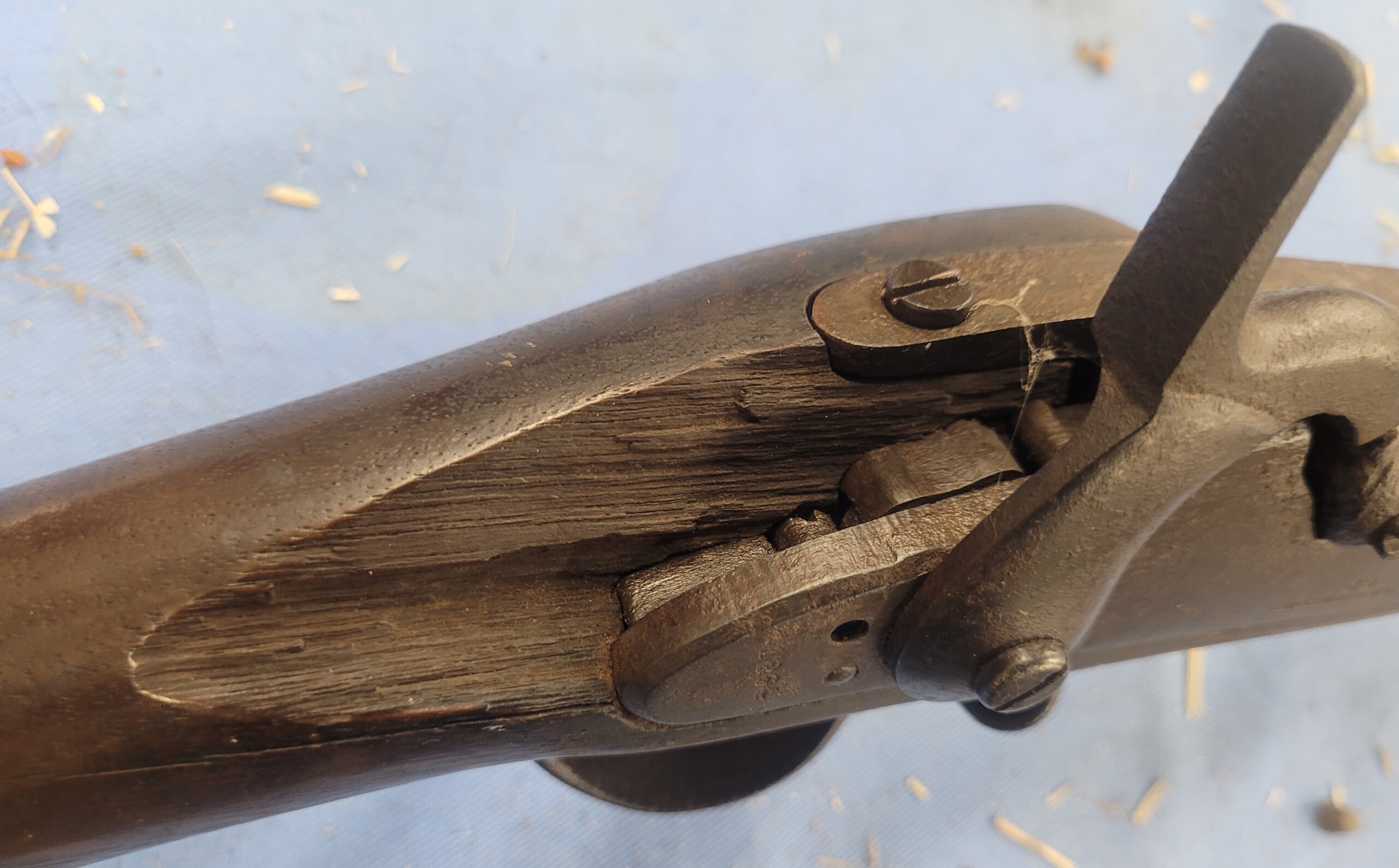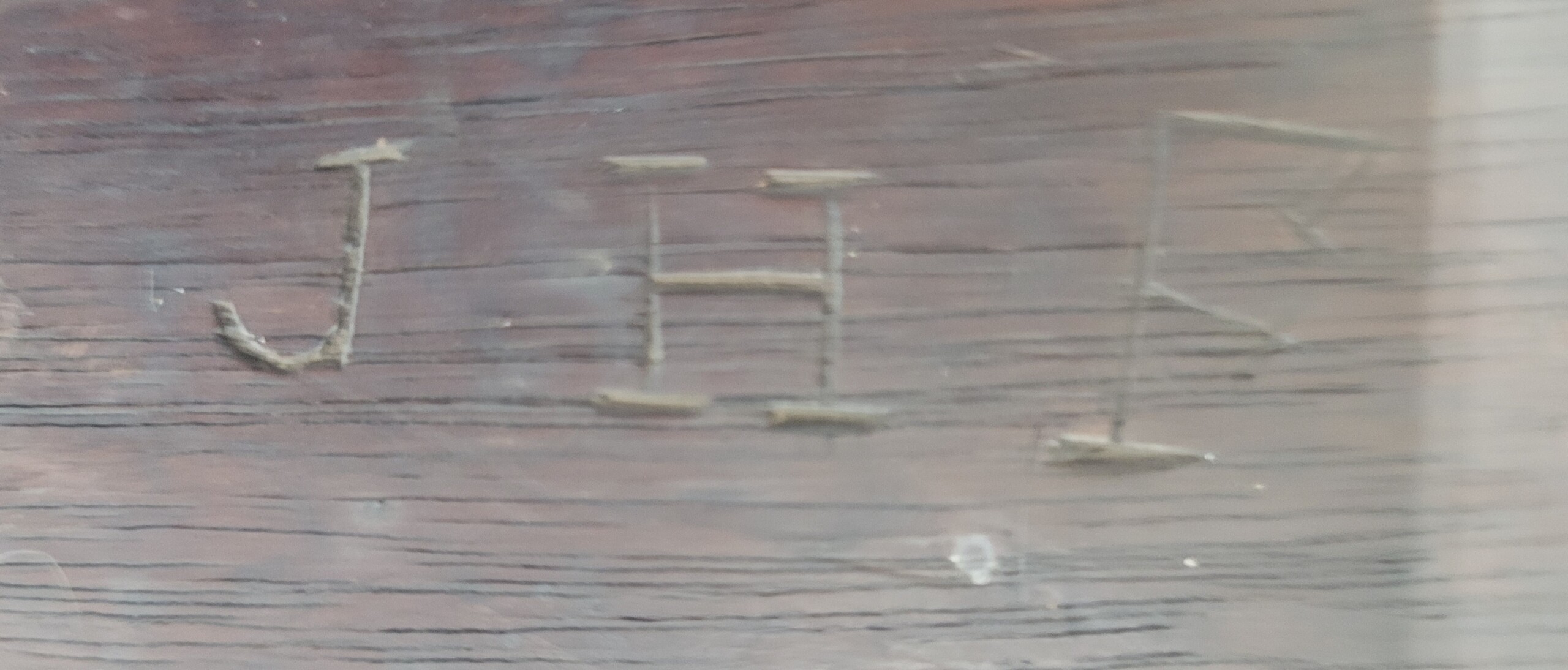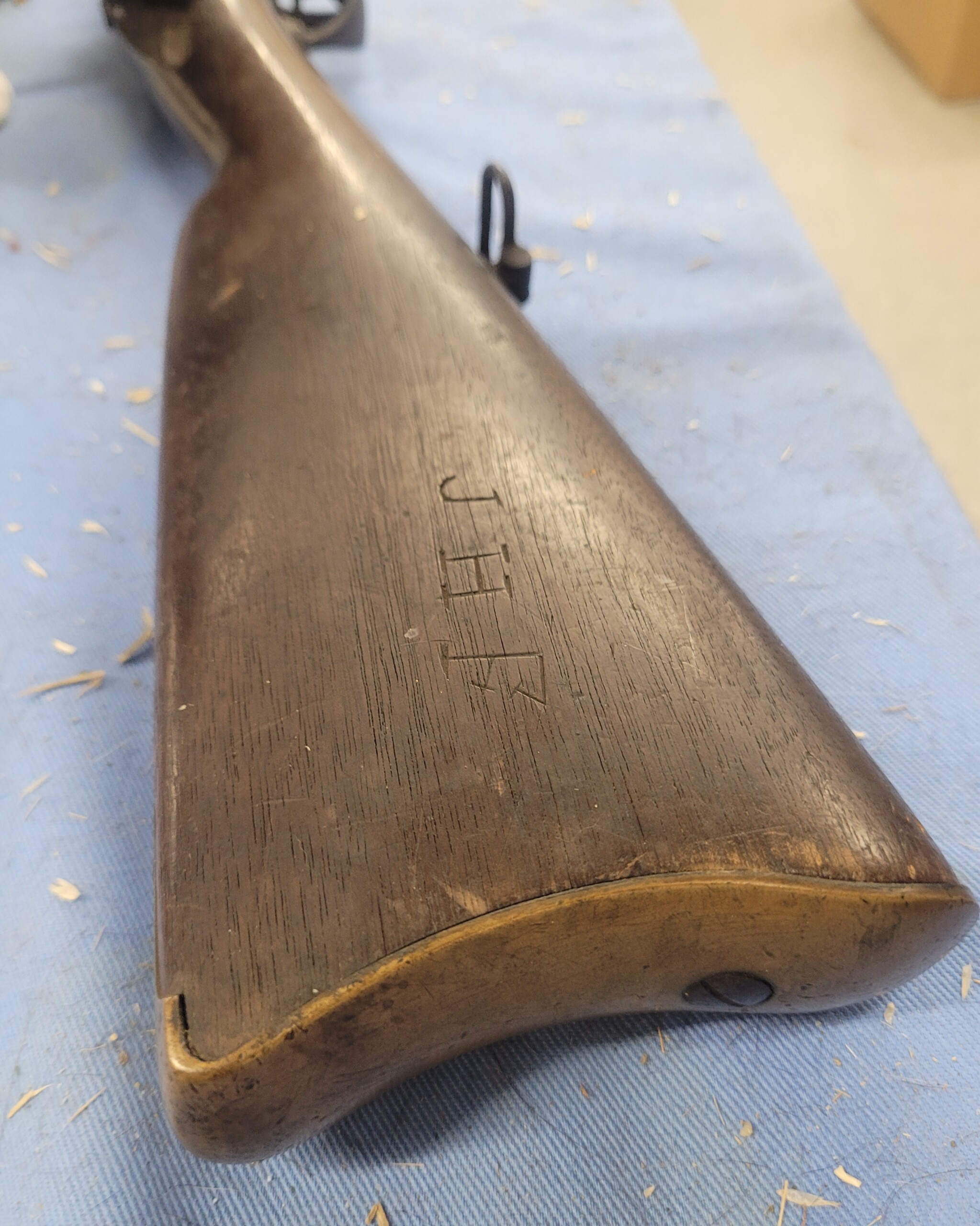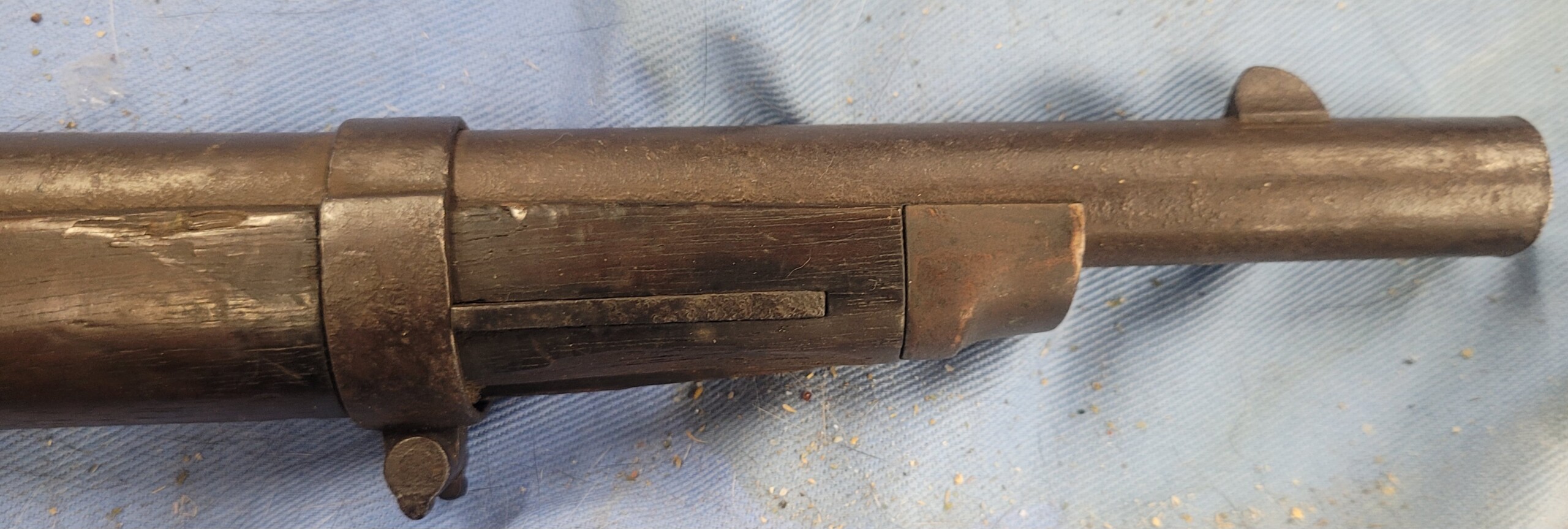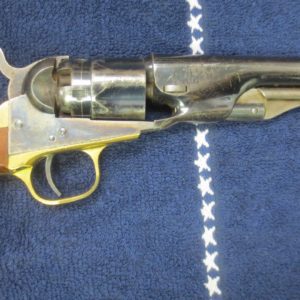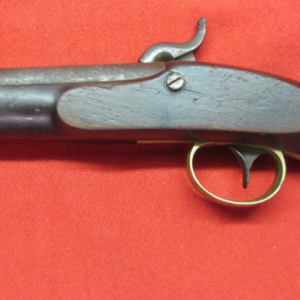Description
Relatively tough little carbine to find, this is a rock solid 100% dead real Richmond Arsenal Cavalry carbine from end to end and in absolutely “as found” condition. It surfaced recently at an auction in Kentucky but originally came out of an antebellum home in Virginia that belonged to the Fletcher family. When it came out, it was stated that it was brought home from the War by James H. Fletcher who served in Company A of the 35th Battalion of Virginia cavalry. There were numerous letters and documents belonging to Fletcher at the time but over the years, the paper goods got separated from the weapon itself as did the history! While there is no positive proof that it belonged to him, the initials “JHF” are neatly carved in the right side of the walnut buttstock.
This firearm is totally untouched and has never been altered or cleaned. It is missing the ramrod and there is a good size chunk of wood missing behind the breech as shown, which could be repaired if so desired. It has a high copper brass buttplate and nosecap as well as the forward “pinch” sight found only on these weapons. The lock is clearly struck and dated 1864 and the super rare rear sight is still there.
You won’t find a more honest example anywhere at such a low price–this one has seen a lot of service as there was still quite a bit going on in 1864 and 1865!
The 35th Virginia Cavalry Battalion, also known as White’s Battalion, White’s Rebels and the Comanches, was a Confederate cavalry unit during the American Civil War raised by Elijah V. White in Loudoun County, Virginia in the winter of 1861-62. The battalion was initially raised as border guards along the Potomac River below Harpers Ferry but were ultimately mustered into regular service as part of the Laurel Brigade. Despite this, they continued to play a conspicuous role in the ongoing partisan warfare in Loudoun throughout the war. The battalion was particularly notable during the 1863 Gettysburg Campaign, when it played a prominent role in the Battle of Brandy Station and subsequently conducted a series of raids on Union-held railroads and defensive positions in Maryland and Pennsylvania.
The 35th was the first Confederate unit to enter Gettysburg, Pennsylvania.
